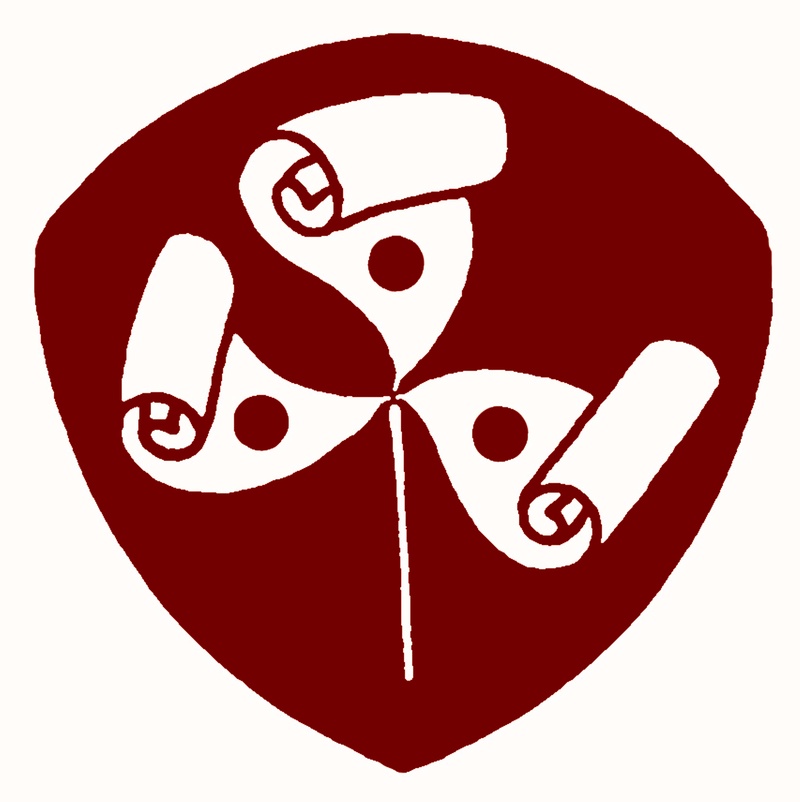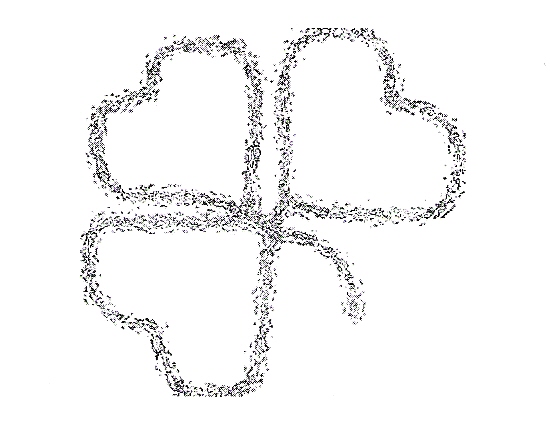Irish Haiku Society

Established in 2006
Haiku in Ireland
The Irish Haiku Society is a not-for-profit organisation promoting the writing and appreciation of haiku in Ireland. It organises readings, ginko, workshops and other haiku-related events.
Haiku in Ireland Originally
nature-oriented Japanese short-form poetry that thrived in the 17th
century, haiku has recently experienced colossal growth in popularity
in the English language. Seamus Heaney stated in The Guardian of 24 November 2007
that since the times of the imagists "the haiku form and the generally
Japanese effect have been a constant feature of poetry in English. The
names of Basho and Issa and Buson have found their way into our
discourse to the extent that we in Ireland have learnt to recognise
something Japanese in the earliest lyrics of the native tradition."
In Ireland, the country with the beautiful landscape, most people are
in touch with nature throughout their lives even if they don't live in
a rural area. The way of living may account for the fact that the Irish
people have a long tradition of appreciation of poetry and respect for
poets. However the history of haiku on this island goes back only a few
decades, so the development of the genre started relatively late.
The first Irish poet to write haiku as we know them was Juanita Casey.
A travelling woman born in England of Irish parents, she spent a
significant part of her life in Co. Galway. She started composing haiku
in late 1960s, and a few of them appeared in her 1968 collection titled
Horse by the River
(1968), followed by a few more that found their way to her 1985
collection, Eternity Smith.
Just one example:
The pickers
have left one plum...
hey, wind
Around 1969 – 1970, Patrick Kavanagh wrote a single haiku, evidently
not even suspecting that it was a haiku – and a worthy one! This piece
appeared in The Lace Curtain
magazine in 1971. We restore here the original version of the poem that
was slightly altered in the magazine, so the first line became the
title.
Corn-crake
a cry in the wilderness
of meadow
Seamus Heaney also tried his hand at haiku writing. The following
piece, in a slightly different version, appeared in his 1991 collection
titled Seeing Things:
Dangerous pavements...
But this year I face the ice
with my father's stick
In 1985, Michael Hartnett published his collection titled Inchicore Haiku. It comprised 87
haiku and senryu written according to the 5-7-5 format, and was the
first collection of haiku and senryu by an Irish poet, so Hartnett can
be regarded as a trailblazer. The poet Mark Lonergan in his essay that
appeared in Shamrock No 15
asserted that "Inchicore Haiku can't serve as a model for a modern-day
haiku writer. Only one of these poems passes the time's test and stands
up as a perfect haiku, if a 5-7-5 English-language haiku can be
perfect." He clearly refers to the following piece:
In a green spring field
a brown pony stands asleep
shod with daffodils
The 1990s witnessed more experiments in Irish haiku writing. Most of
the newly written poems were free-form haiku, even though a few poets,
notably Tony Curtis and Tom O'Malley, chose to write according to the
5-7-5 form abandoned by most of contemporary English-language haijin
(haiku poets).
Then the era of the Internet started. Haiku poets found new platforms
for creative exchanges. We should mention the strong presence of Irish
poets on haiku forums, like Shiki Internet Haiku Salon, rather popular
in the late 1990s, and the ever helpful World Kigo Database, where the
Irish expat poet Isabelle Prondzynski has been a regular contributor.
David Burleigh translated Japanese haiku into English, and his
translations were later anthologised.
The first haiku magazine on the island of Ireland, Haiku Spirit, was founded in 1995
by James Norton. It was a paper-based journal of haiku and related
forms that published Irish and international haiku poets. All in all,
twenty issues of Haiku Spirit
appeared between 1995 and 2000. James Norton remained the sole editor
until 1997 when Sean O'Connor joined him as co-editor. Quoting the
English haiku poet and editor John Barlow, "borne of the Zen
sensibilities of the editors, Haiku
Spirit not only greatly raised awareness of haiku in Ireland and
of Irish haiku internationally – not least in publishing international
poets alongside Irish poets." Its demise left a void that has only been
filled in recent years. Another Irish haiku magazine called Lishanu published its first
online issue in 2005; the second followed in 2011. Shamrock, the international
online magazine of the Irish Haiku Society, was founded in January 2007
as a quarterly, and has since been publishing thematic issues focusing
on the haiku movements in various countries, as well as Irish and
international haiku, haibun (short prose with haiku mixed in), essays
and book reviews.
Unfortunately, Ireland hasn't yet developed a culture of haiku blogging
in the same way some other English-speaking countries did. The Irish
haiku blogs we have seen are devoid of quality writing and display next
to no knowledge of the history and artistry of the genre. One of them,
ridiculously calling itself a haiku magazine, states that it 'welcomes
pseudohaiku as a poem in progress'!
This highlights the importance of haiku education conducted by
organised groups of haiku poets. There are currently two associations
of haijin on the island of Ireland: Haiku Ireland founded in 2004 and
launched in 2005, and the Irish Haiku Society founded in September
2006. As things stand today, Haiku Ireland, according to their website,
has thirty-three Irish poets as members, whereas the Irish Haiku
Society has seventy-two. A few of the Irish haiku poets have chosen to
join the British Haiku Society. Quite a number of Irish haijin are
regular contributors to major international haiku magazines and
anthologies; some of them have won haiku accolades in various
countries, including Japan, USA, Canada, Croatia, Romania, Italy and,
of course, Ireland.
Both societies conduct workshops and haiku excursions (ginko), organise
haiku readings and book launches; their websites offer information
about forthcoming haiku events and have haiku guidelines for aspiring
haiku poets. The Irish Haiku Society (IHS) also holds the annual
International Haiku Competition, which has become popular not only
among the Irish haijin but also among the international masters of the
genre.
Haiku in Ireland are being written predominantly in English, although
such poets as Gabriel Rosenstock, Sean Mac Mathuna, Cathal Ó Searcaigh
and Paddy Bushe created quite a number of quality haiku as Gaeilge,
sometimes translating themselves into English. The following
Irish-language haiku by Gabriel Rosenstock accompanied by his
self-translation can serve as an example:
i súile an ghadhair
leis...
an fómhar
(in the dog's eyes
too...
autumn)
Those who appreciate short-form poetry can't avoid raising the question
if there is a distinguishable "Irishness" about haiku written by Irish
authors. Indeed, should we speak of an Irish haiku tradition? One can
argue that the concerns of haiku writers and the poetic devices they
choose to use are similar all over the world, and have been since the
times of Basho. This doesn't prevent us from customarily defining such
schools of haiku writing as Japanese, American, Australian, English,
French, or – dare we say it? – Celtic. And it isn't the local subject
but rather the poetic traditions of the locality that matter. This
determines the way the poets work with the material, not to mention
that the material itself may vary a lot, as the nature can be
strikingly different in various parts of the world. Despite the variety
of English-language haiku being written in Ireland, the Irish haiku
movement is much closer to the Celtic stream than to the English one,
or simply should be regarded as a part of the former. E.g. the Irish
haijin often use indirect metaphors, which is rather typical of Celtic
haiku – and of Japanese, of course.
Irish haiku appear more or less periodically in mainstream Irish poetry
magazines, such as Poetry Ireland Review, Cyphers and The SHOp.
Sometimes they find their way onto the pages of international haiku
anthologies, e.g. red moon anthologies and The New Haiku edited by John Barlow
and Martin Lucas. The anthology titled Bamboo Dreams and edited by Anatoly
Kudryavitsky (Doghouse Books, 2012) was the first ever Irish national
anthology of haiku poetry. It featured work by seventy-seven authors
who had contributed to the development of haiku on the Emerald Isle.
Reflecting the recent rise of haiku popularity in our country, that
book offered not a compilation of poems 'about' Ireland but rather the
most evocative haiku written by poets born or residing here. Not every
poet who practised the genre in this country was included, let alone
visitors and short-term residents, however the editor's aim was to make
that anthology inclusive. He also found room for a few haiku by Irish
mainstream poets, as long as their texts were convincing.
With each passing month, more quality haiku are being written in
Ireland, so we can foresee more haiku books and anthologies getting
onto the shelves of the Irish book-shops in the not-so-distant future.
Anatoly Kudryavitsky
First published in Bamboo
Dreams, an Anthology of Haiku Poetry from Ireland. Doghouse Books, 2012
Juanita Casey
Burning leaves...
the face once again
feels summer
The pickers
have left one plum...
Hey, wind
On the South wall
hangs a pear –
on the North wall
hangs a year
Under the bridge,
the stream –
the leaf and I,
travellers
Haiku from Horse by the River and other poems, publ. by Dolmen Press, 1968
Four crows on four posts
across a field of mustard –
a chord for summoning foxes
Why rage if the roof
has holes?
Heaven is roof enough
Both haiku from Eternity Smith and other poems, publ. by Dolmen Press, 1985.
© Juanita Casey, 1968, 1985
The legendary Juanita Casey, a travelling woman and a powerful poet, was probably the first in Ireland to write haiku as we know them. She started composing them in the 1960s, and a few of them appeared in her 1968 collection. She kept writing them for quite a number of years. Rumour has it that she has written more than appeared in her collections.
Patrick
Kavanagh
Corn-crake
a cry in the wilderness
of meadow
(First
published in The Lace Curtain No 4, 1971)
©
Patrick Kavanagh, 1971
Patrick Kavanagh, one of the most powerful Irish poets, probably didn't
know that he wrote a haiku, and an excellent one! We found it in an old
Irish magazine.
Michael
Hartnett
In a green spring field
a brown pony stands asleep
shod with daffodils
Sanctifying grace:
a seagull and a jackdaw.
They kiss in the sky
Somewhere in the house
a tap gushes out water –
sounds of someone else
Publication of these haiku from the
Inchicore Haiku sequence on our website is our tribute to Michael
Hartnett, the wonderful poet who was one of the first in Ireland to pay
attention to this genre. "Inchicore Haiku" was published in book-form
in 1985, so Hartnett was the first Irish poet to publish a collection
of his haiku/senryu.
© Michael Hartnett, Gallery Press, 2001
Seamus Heaney
Haiga by Anatoly Kudryavitsky (©
Anatoly Kudryavitsky, 2007)
featuring the following haiku by Seamus Heaney, in his own handwriting
(© Seamus Heaney, 2012; this version first published in "Bamboo Dreams:
An Anthology of Haiku Poetry from Ireland", Doghouse Books, 2012):
Dangerous pavements...
But this year I face the ice
with my father's stick
Springtime in Ulster:
aerials in hedges, squawk
of walkie-talkies
First
published in Stepping Stones: Interviews with Seamus Heaney by Dennis
O'Driscoll (New York: Farrar, Straus and Giroux, 2008, p. 213)


